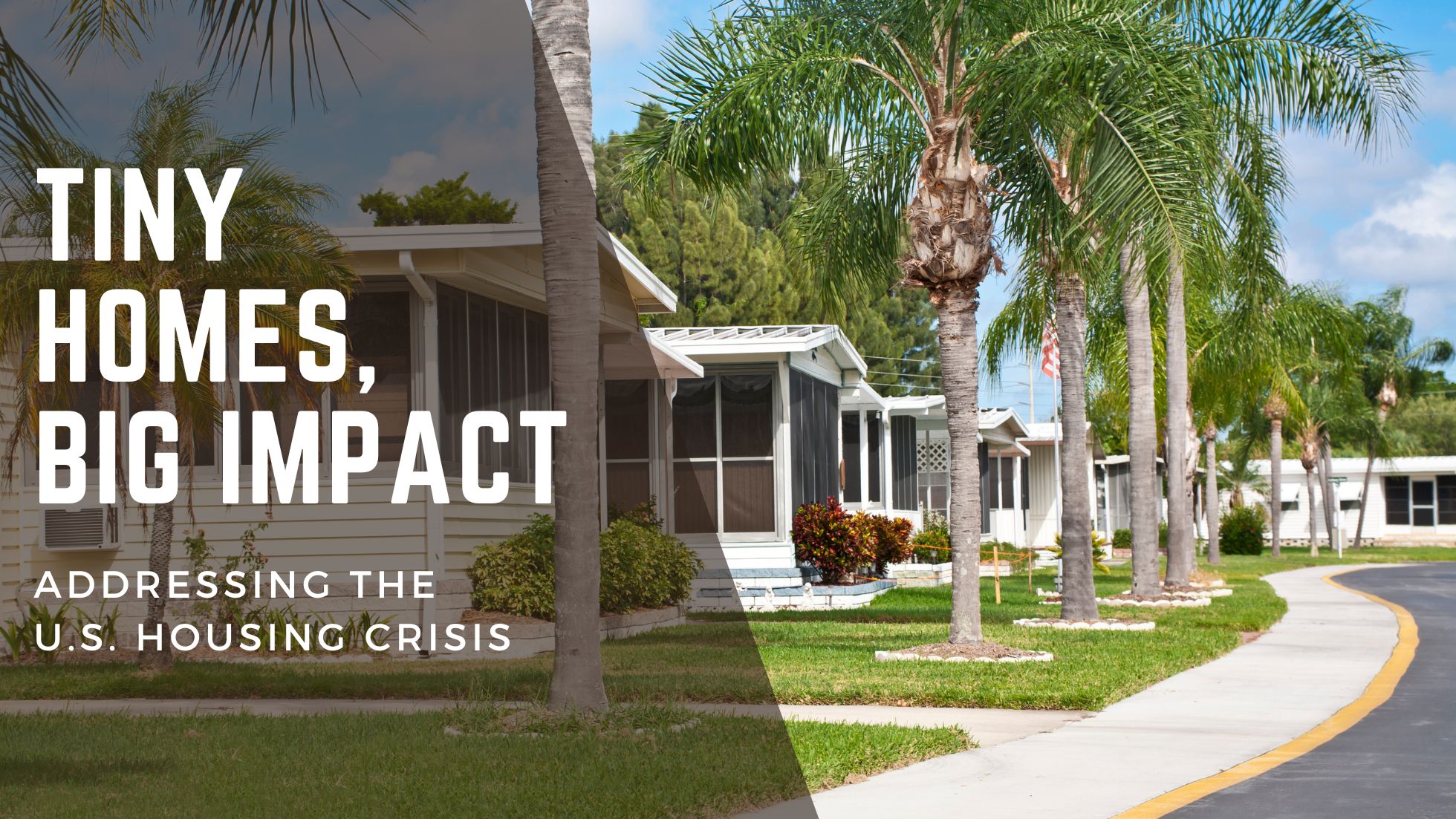
The United States is grappling with a persistent and severe housing crisis that affects millions of Americans. Housing costs for both renters and homeowners continue to rise rapidly, making affordable housing harder to find. Rent prices are increasing faster than overall inflation, creating an especially tough environment for renters. According to a recent report from Harvard University’s Joint Center for Housing Studies, the problem is growing worse, with both renters and homeowners increasingly burdened by skyrocketing costs.
Nearly one in four homeowners are now “stretched worryingly thin” as housing prices and mortgage payments soar. The Federal Reserve’s rate hikes since 2022 have pushed mortgage rates to multi-decade highs, sidelining many prospective buyers and straining current homeowners. As a result, tens of millions of households now spend more than 30% of their income on housing, creating significant financial strain and instability for families nationwide.
The Rise of Tiny Homes
Tiny homes have emerged as a promising solution in response to these challenges. Defined typically as residences under 1,000 square feet and often as small as 500 square feet, tiny homes offer a stark contrast to the average U.S. home size of approximately 2,500 square feet. This compact living model appeals to those seeking affordability, simplicity, and a stronger sense of community. The tiny home market is expanding as more individuals and families look for cost-effective ways to secure shelter during an increasingly expensive housing landscape.
Affordability and Efficiency
One of the primary advantages of tiny homes is their affordability. They are significantly cheaper to build and purchase than traditional homes, making homeownership attainable for a broader population segment. Tiny homes offer substantial lifetime savings through reduced energy bills and lower maintenance costs.
A Blend of Ideals and Practicality
The tiny house movement represents a fusion of counter-cultural ideals and economic pragmatism. It encourages a shift towards sustainable, minimalist living, reducing consumerism and environmental impact. Despite being connected to essential neighbourhood resources like plumbing and waste collection, tiny homes blend off-grid principles with conventional housing needs. This hybrid approach allows residents to make a political statement about their lifestyle choices while maintaining practical access to necessary services.
Addressing Homelessness and Social Issues
Beyond providing affordable housing for those struggling to own traditional homes, tiny homes offer a compassionate solution to homelessness. With over 580,000 Americans experiencing homelessness, tiny home villages present a cost-effective and efficient way to provide safe and private living spaces. For example, California Governor Gavin Newsom allocated $30 million to build 1,200 tiny homes aimed at reducing homelessness. Similarly, nonprofit organizations are developing tiny home communities for homeless veterans and individuals recently released from incarceration, fostering social integration and stability. In Washington D.C., a bipartisan congressional bill proposes allocating $100 million over five years to expand tiny home villages for veterans, highlighting the growing recognition of tiny homes as a tool for social good.
Overcoming Financial and Regulatory Barriers to Scaling Tiny Homes
Despite their promising potential, tiny homes encounter significant obstacles that impede widespread adoption and scalability. One of the primary challenges is financing; tiny homes often fall under the category of manufactured housing, which has limited mortgage options compared to traditional homes. This makes accessing funds for purchasing or building tiny homes more difficult, reducing their accessibility for many potential homeowners.
In addition to financial hurdles, a patchwork of zoning regulations across various states restricts the construction and placement of tiny homes and accessory dwelling units (ADUs). Many localities enforce stringent single-family zoning laws that effectively prohibit smaller housing units, thereby limiting the scalability of tiny houses as a viable solution to the housing crisis. These regulations vary widely, creating a fragmented landscape that complicates efforts to implement tiny home communities on a larger scale.
Moreover, the variability in local zoning laws remains a major barrier, as numerous regions have yet to embrace the flexibility required to accommodate smaller housing units. Experts like Alameldin from the Terner Center emphasize that legalizing tiny homes is merely the initial step in a broader strategy needed to reform housing policies comprehensively.
I want to emphasize that advocating for zoning reforms does not equate to banning single-family homes, but rather, it aims to provide more housing options and address the housing affordability crisis. The mortgage industry has a crucial role to play in this transformation, including advocacy for housing typologies and addressing appraisal disparities in accessory dwelling units.
– Muhammad T. Alameldin LinkedIn post
Overcoming these financial and regulatory barriers is essential for scaling up tiny homes to address the nationwide housing shortage effectively. Coordinated efforts to streamline financing options and standardize zoning regulations can enhance the feasibility of tiny homes, making them a more accessible and scalable option for millions of Americans seeking affordable and stable housing.
Final Thoughts: A Critical Component of a Multifaceted Solution
Tiny homes are not a standalone fix for the United States’ long-standing housing crisis, but they are a valuable component of a multifaceted approach to addressing the issue. As zoning laws evolve and more communities embrace alternative housing models, tiny homes can significantly contribute to alleviating housing pressures. Integrating tiny homes into cooperative and communal living arrangements can enhance their effectiveness, drawing on the historical successes of co-ops and community-focused housing initiatives. As the housing crisis continues to impact millions, tiny homes offer a pragmatic and compassionate option that, when combined with other strategies, can help create a more equitable and sustainable housing landscape for the future.
